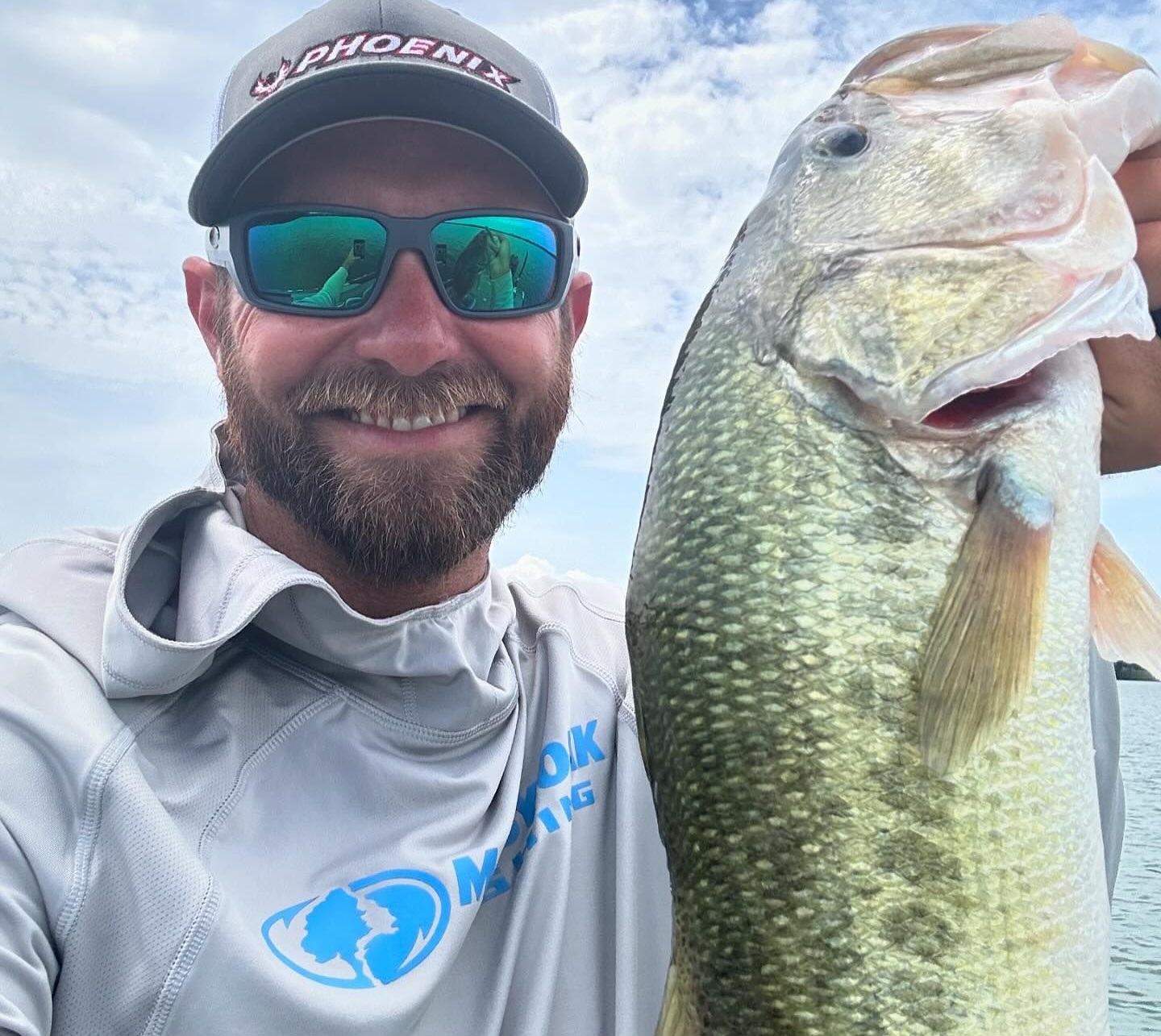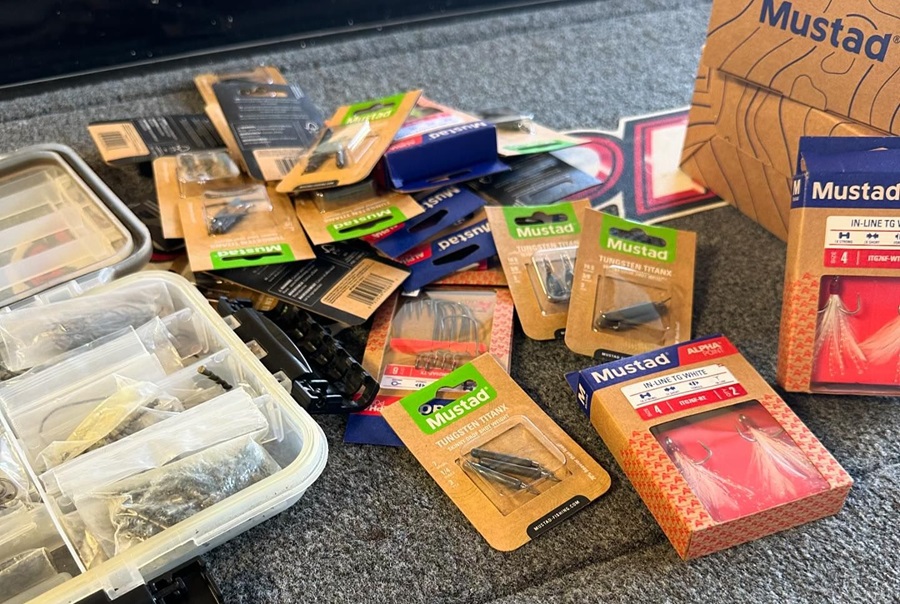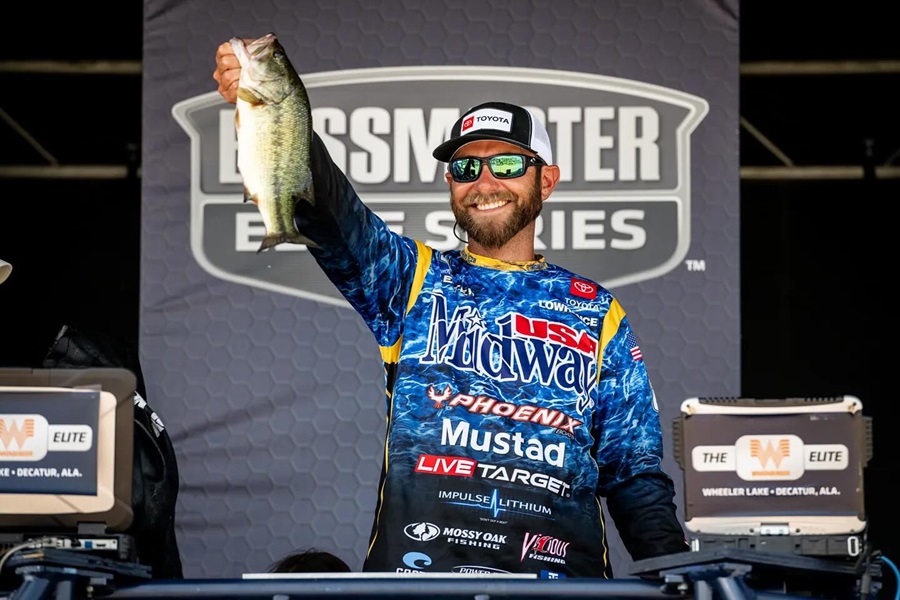
Fall can be a tricky time of year to stay consistent, as one of the only constants is bass on the move. It happens yearly as water temperatures cool, baitfish start to change locations, and bass fishing becomes all about finding the bait. It's a scenario that plays out every autumn, and Bassmaster Elite Series pro Brandon Lester sticks with the tried-and-true plan of covering water with proven techniques each fall.
Keep it Moving

There have been countless mentions of the shad migration in the fall and how bass move into the creeks to follow them. It's true, and it will happen again this year. Lester keeps this in mind every time he goes fishing in the fall.
"The age-old wisdom tells you that the baitfish start to migrate, and a lot of times, the bass do go with them to the backs of creeks," he said. "Everything is on the move in the fall, and as simple as it sounds, the best plan is to cover water until you get around some active fish. That's a good idea any time of year, but it's even more important now."
Finding active baitfish has become easier with technology like forward-facing sonar, but Lester still uses his senses and looks for visible clues above the water. He also notices the fall months can lend themselves to much smaller groups of bass instead of massive schools.
"In the summer, it's easier to graph out deep and find those big schools, but they bust up more into singles and pairs in the fall," he said. "I still use my electronics this time of year, but putting that trolling motor on high and covering water is still one of the most effective ways to find fish. I'll also constantly look for surface activity as bass chase shad."
When covering water, his bait selection is as simple as it gets. A walking topwater and buzzbait are proven lures that work for him every fall.
"Burning the bank with a buzzbait is an excellent way to cover water, and I'll also fish a walking bait that I can work fast and imitate baitfish on the surface," he said. "The buzzbait is great for fishing the ends of laydown trees and I like the walking bait any time I see schooling activity or when I get in pockets with the wind blowing back into them."
For his topwater walking baits, Lester swaps out the hooks with Mustad Alpha Point Inline Triple Grip treble hooks. He also makes sure to keep the same size.
"I don't like to upsize in this case because the baits will come with the right size hooks that get the bait to work the best," he said. "Going with a bigger hook will change how the bait walks and could affect how it floats, so I stick with the same size. I'll also add a Mustad Triple Grip feathered treble on the back to give the bait a more natural look and give the fish something to key in on."
Then Slow it Down

Once he finds some bass in an area, Lester changes gears and fishes a little slower. He does this with slower-moving topwater baits and soft plastics.
"If you're around fish and they stop biting, you can usually get a few more to commit with a popper," he said. "That slow 'pop, pop, pop' will draw in more of those fish. The other thing I always keep handy is a Texas Rig with some type of creature bait."
The creature bait is ready in case he comes across a good-looking piece of cover or if the bite slows. "I keep it on deck in case I see any juicy cover, or I work my topwater past a laydown, and they don't come up for my topwater," he said. "I'll also use it if I see schooling activity in a pocket and they stop biting; you can look around and try to see where a bass could be sitting. That can be one way to get a better-than-average fish, especially in the fall."
Lester will rig his creature baits with anything from a ¼ to a 3/8-ounce Mustad Tungsten TitanX and a 4/0 Alpha Grip Flipping Hook.
"That's a good straight shank hook with an excellent keeper on it," said Lester. "The whole Alpha Grip line of hooks have that slick coating on them to get better hookups, and they've also changed the points. They have a finer point that won't roll over on you. They are dang good hooks and have been pretty impressive."
Fishing during the fall months requires a little more movement to find baitfish and active bass, but the results can be great once you do. Sticking with fast-moving topwaters until you find them and then slowing down and picking apart an area is a proven way to have fall success.


 Advertising
Advertising